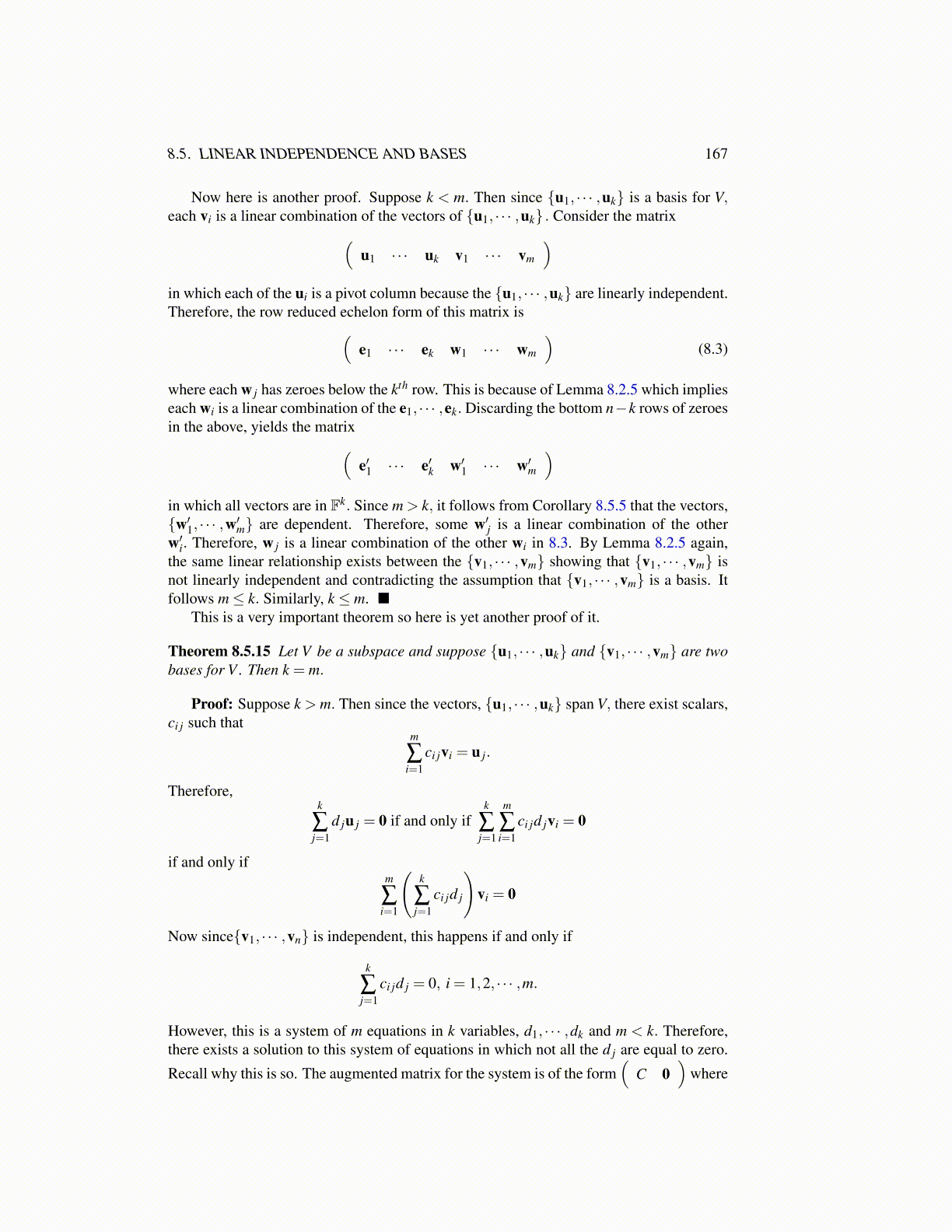
8.5. LINEAR INDEPENDENCE AND BASES 167
Now here is another proof. Suppose k < m. Then since {u1, · · · ,uk} is a basis for V,each vi is a linear combination of the vectors of {u1, · · · ,uk} . Consider the matrix(
u1 · · · uk v1 · · · vm
)in which each of the ui is a pivot column because the {u1, · · · ,uk} are linearly independent.Therefore, the row reduced echelon form of this matrix is(
e1 · · · ek w1 · · · wm
)(8.3)
where each w j has zeroes below the kth row. This is because of Lemma 8.2.5 which implieseach wi is a linear combination of the e1, · · · ,ek. Discarding the bottom n−k rows of zeroesin the above, yields the matrix(
e′1 · · · e′k w′1 · · · w′m)
in which all vectors are in Fk. Since m > k, it follows from Corollary 8.5.5 that the vectors,{w′1, · · · ,w′m} are dependent. Therefore, some w′j is a linear combination of the otherw′i. Therefore, w j is a linear combination of the other wi in 8.3. By Lemma 8.2.5 again,the same linear relationship exists between the {v1, · · · ,vm} showing that {v1, · · · ,vm} isnot linearly independent and contradicting the assumption that {v1, · · · ,vm} is a basis. Itfollows m≤ k. Similarly, k ≤ m. ■
This is a very important theorem so here is yet another proof of it.
Theorem 8.5.15 Let V be a subspace and suppose {u1, · · · ,uk} and {v1, · · · ,vm} are twobases for V . Then k = m.
Proof: Suppose k > m. Then since the vectors, {u1, · · · ,uk} span V, there exist scalars,ci j such that
m
∑i=1
ci jvi = u j.
Therefore,k
∑j=1
d ju j = 0 if and only ifk
∑j=1
m
∑i=1
ci jd jvi = 0
if and only ifm
∑i=1
(k
∑j=1
ci jd j
)vi = 0
Now since{v1, · · · ,vn} is independent, this happens if and only if
k
∑j=1
ci jd j = 0, i = 1,2, · · · ,m.
However, this is a system of m equations in k variables, d1, · · · ,dk and m < k. Therefore,there exists a solution to this system of equations in which not all the d j are equal to zero.
Recall why this is so. The augmented matrix for the system is of the form(
C 0)
where